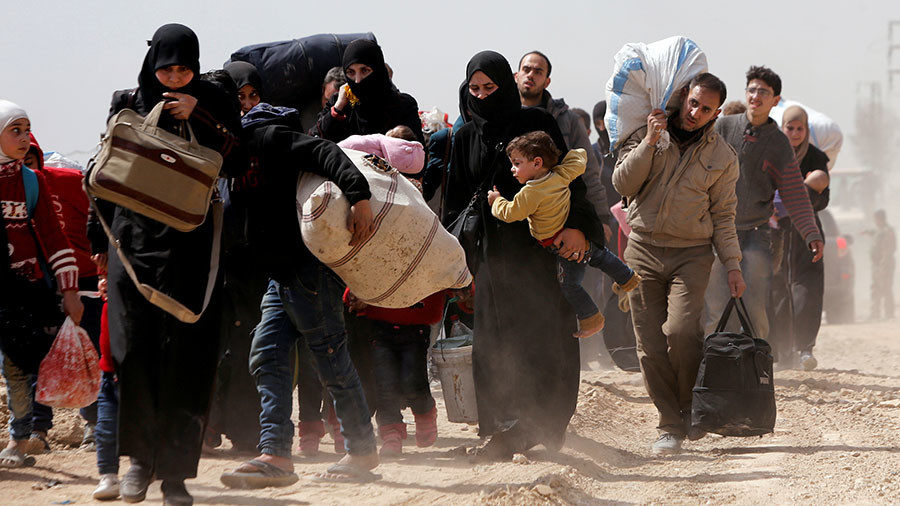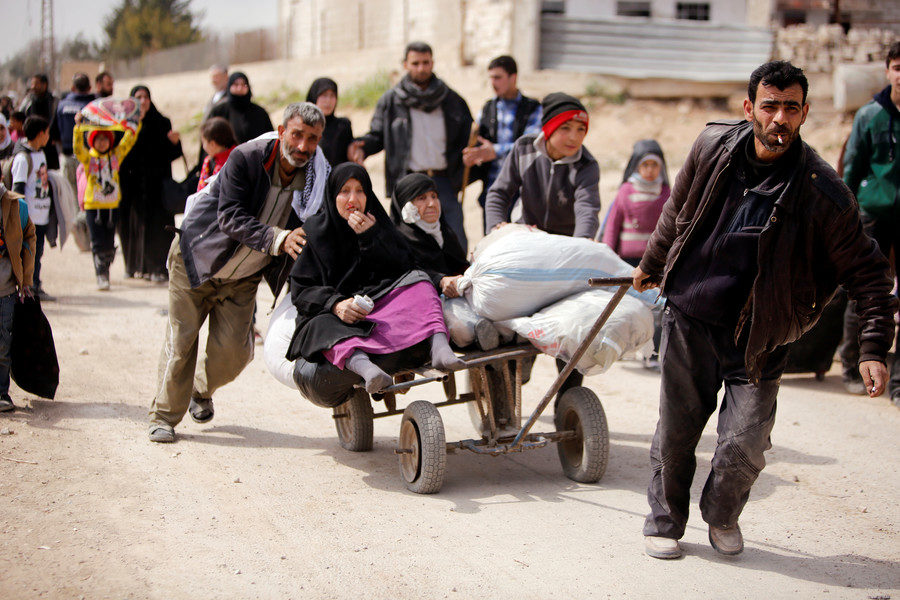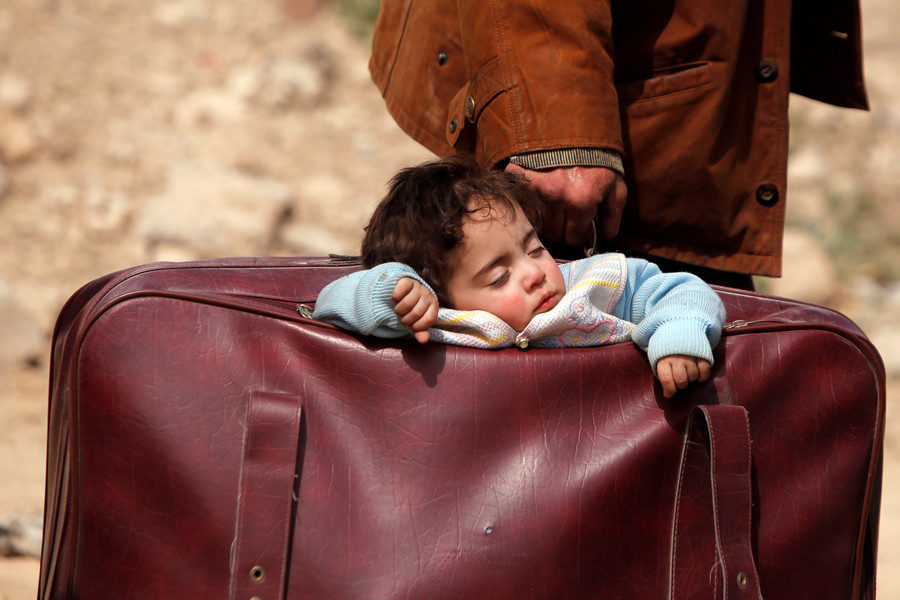
Almost 11,000 civilians have been safely evacuated, the Russian military said.
Some 800 civilians were leaving the area every hour through a humanitarian corridor established by the Russian Center for Reconciliation in Syria and the governmental forces, the footage taken on the ground was showing crowds of civilians moving through the corridor. While some of them go by car, most still travel over this long distance on foot. Entire families are seen leaving the area, with the people often carrying their children. Some are also seen carrying stretchers with injured or sick relatives.
READ MORE: Militant groups split & clash in E. Ghouta, civilians seek shelter - Russian MoD
Evacuees have provided accounts of how militants controlling Eastern Ghouta drove up food prices and imposed harsh punishments for even the slightest transgressions. This came as terrorist groups in the region continued to shell civilian areas of Damascus and fired at those who were trying to flee the enclave.
The mass exodus has been facilitated by the fact that hostilities in some parts of eastern Ghouta have nearly ceased. The situation in Douma, the biggest town in the region, which is still held by various armed groups, has "significantly stabilized,"the Russian military said.
The situation has also been improved due to the successful offensive of governmental forces. "Today one could say that there is a hope for the resolution of the humanitarian crisis [in eastern Ghouta], as most civilians have left the fighting zone while the Syrian Army moved into ... the areas held by Al Nusra militants," an RT Arabic correspondent said. He added that it was the Syrian Army's offensive that opened a way for civilians living in the militant-held districts to flee the active combat zone.
Earlier, it was repeatedly reported that the armed groups entrenched in the embattled suburb used civilians as human shields, seeing them as their own security guarantee. On March 4, the Russian Defense Ministry also said that the militants imposed a curfew in eastern Ghouta and publicly punished civilians for their violation in apparent attempts to prevent them from fleeing the area.
The humanitarian pause also allowed aid to be provided to civilians, according to an earlier statement from the Russian Reconciliation Center, which added that the ceasefire between the warring parties in the area held for three days in a row. The center sent two humanitarian convoys last week, delivering 318 tons of food and medicine to Douma. The International Committee of the Red Cross (ICRC) also said on Thursday that a joint UN-Syrian Red Crescent convoy of 25 trucks with humanitarian aid has entered a militant-held area in eastern Ghouta.
The militant-held suburb of Damascus has been the scene of intense fighting since Syrian government forces launched an offensive in February in a bid to dislodge rebel fighters from their last bastion outside Damascus. Russia has been assisting Damascus in an effort to help evacuate civilians via humanitarian corridors and bring in the vital aid and supplies.





Reader Comments